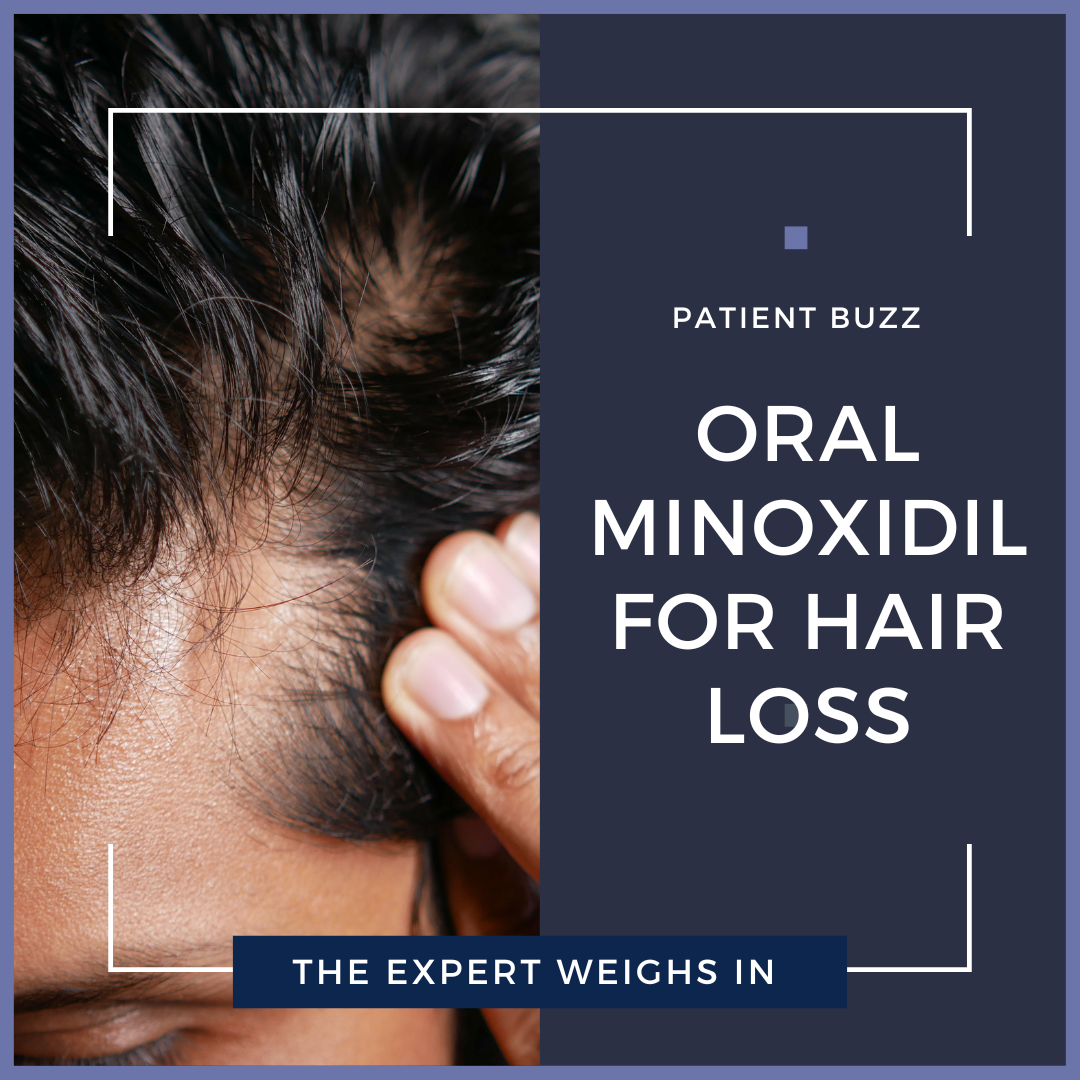INSIDER recently posted an article on oral minoxidil for hair loss as a result of media coverage in The New York Times. Which hair loss patients make good candidates for oral minoxidil? How should a dermatologist determine the best dosage for their patients?
For expert advice, I reached out to Shilpi Khetarpal, MD, FAAD, director of cosmetic dermatology and lasers at the Cleveland Clinic.
Oral minoxidil for hair loss has received a lot of media coverage in recent weeks. Have you noticed an increase in patients asking about the treatment? If so, why do you think this treatment option is receiving such high interest?
Hair loss is a common problem that affects many, so any time there is a new treatment option, it generates interest. Currently, the FDA only has 2 approved agents for androgenetic alopecia (AGA) and those are topical minoxidil and oral finasteride. Because of this, many hair loss treatments are off label and providers are always looking for safer, new options to offer patients.
How did dermatologists start prescribing minoxidil orally for hair loss, and how has that use changed over time?
Topical minoxidil has been recommended by dermatologists for decades to treat hair loss. It comes in 2% liquid and 5% foam or liquid, and is available over the counter as a generic.
Oral minoxidil is a vasodilator used to treat high blood pressure. In clinical trials, more than ¾ of patients had hypertrichosis 3 to 6 weeks after starting the medication. In 2017, the first paper was published using oral minoxidil to treat hair loss as a pilot study.
How does oral minoxidil compare with other hair loss treatments?
It works in a different way— hair loss therapies are hard to compare but it does seem to be superior to topical minoxidil and does not have the sexual side effects of finasteride and dutasteride.
Which hair loss patients make good candidates for oral minoxidil?
Oral minoxidil has been shown to be beneficial in many types of hair loss including AGA, telogen effluvium (TE) and lichen planopilaris (LPP). It is also best for those who are not taking other cardiac medications. As with all hair loss therapies, those who start at the early signs of hair loss will see better results than those with longstanding disease, especially with AGA once the follicles are miniaturized.
What is important for every dermatology practitioner to know when starting a patient on oral minoxidil for hair loss?
Because it causes hair growth, many patients — male and female— will see hair grow everywhere. For women that can be more peach fuzz on the face, while for men that can be thicker beards. It can also cause leg swelling in a small portion of people.
How should a dermatologist determine the best dosage for their patients?
It is best to start low and titrate up. I typically start at 0.625 or 1.25 mg daily. Since it comes in a 2.5 mg pill, patients can cut it in ¼ or ½ as their starting dose. If they are tolerating it well they can increase their dose after 2-3 months. The goal dose is 2.5 mg for women and 5mg for men daily.
What other guidance do you have for dermatology practitioners in treating patients with oral minoxidil?
If a patient has a cardiac history or is already on anti-hypertensives, speak to their primary care physician to ensure this is an appropriate treatment for them.
What other oral medications can also treat hair loss?
Since hair loss is such a broad category, there are numerous oral medications that are used to treat hair loss, most are off label. Spironolactone, OCPs, finasteride, and dutasteride can be used to treat AGA. For LPP and frontal fibrosing alopecia, the tetracycline family of antibiotics is used for its anti-inflammatory properties, especially doxycycline. Hydroxychloroquine and dutasteride can also be used. For alopecia areata/totalis, there has been recent FDA approval for an oral JAK inhibitor, baricitinib.
What’s on the horizon for oral treatments of hair loss?
For the autoimmune types of hair loss like alopecia areata and totalis, various JAK inhibitors are being studied. For AGA, prostaglandin inhibitors are being studied.
There are also nutraceuticals that use herbal medications that are being studied to see how they can also help with hair growth and have a cumulative effect when taken with medical therapy.
Did you enjoy this Patient Buzz expert commentary? You can find more here.

